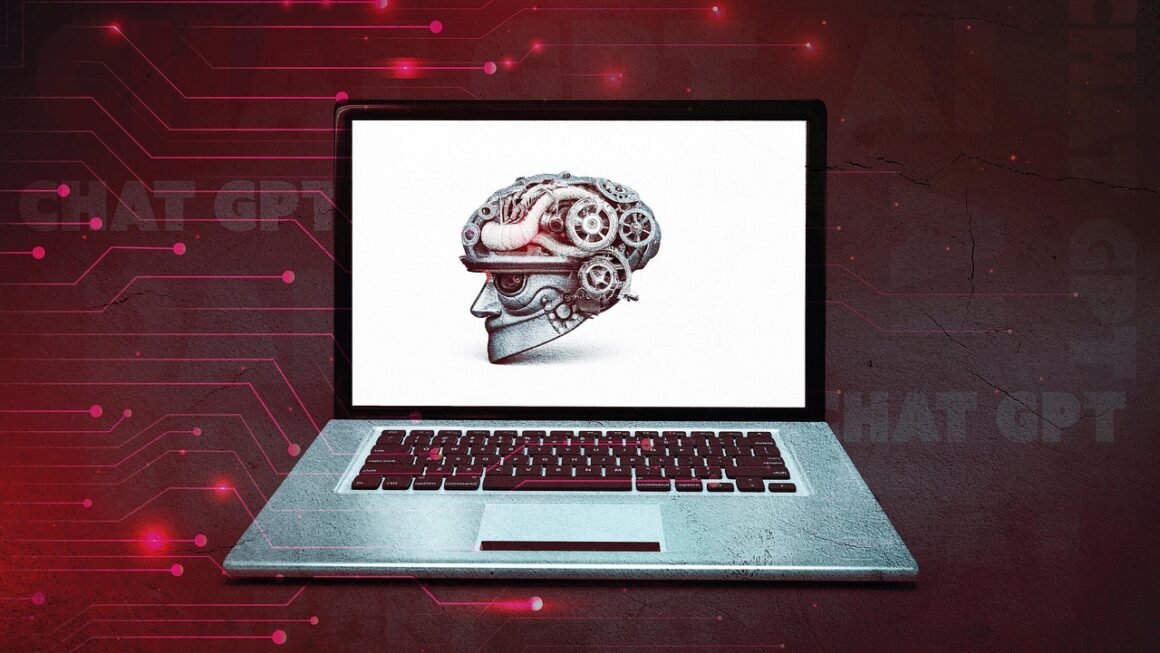Unsupervised learning: sounds complex, right? But it’s actually one of the most fascinating and powerful branches of machine learning. Imagine teaching a computer to find patterns in data without explicitly telling it what to look for. That’s the essence of unsupervised learning – enabling algorithms to discover insights, structures, and relationships on their own. This blog post dives deep into the world of unsupervised learning, exploring its core concepts, techniques, applications, and why it’s becoming increasingly important in today’s data-driven world.
Understanding Unsupervised Learning
What is Unsupervised Learning?
Unsupervised learning is a type of machine learning where algorithms are trained on unlabeled data. Unlike supervised learning, which requires labeled training data to learn a mapping between inputs and outputs, unsupervised learning algorithms explore the data to identify hidden patterns, structures, and groupings without any prior knowledge or guidance.
- Key Characteristic: Absence of labeled data.
- Goal: To discover inherent structure in the data.
- Contrast with Supervised Learning: Supervised learning uses labeled data for prediction or classification, while unsupervised learning explores unlabeled data for insights.
Types of Unsupervised Learning Tasks
Unsupervised learning encompasses a variety of tasks, each designed to extract different types of information from unlabeled data. The two most common types are clustering and dimensionality reduction.
- Clustering: Grouping similar data points together. Examples include customer segmentation and anomaly detection.
- Dimensionality Reduction: Reducing the number of variables in a dataset while retaining its essential information. This simplifies analysis and improves model performance.
- Association Rule Learning: Discovering relationships between variables in a dataset. A common example is market basket analysis.
- Anomaly Detection: Identifying rare or unusual data points that deviate significantly from the norm. Useful for fraud detection and equipment failure prediction.
Popular Unsupervised Learning Algorithms
Clustering Algorithms
Clustering algorithms aim to partition data points into distinct groups or clusters based on their similarity. Several algorithms are commonly used, each with its own strengths and weaknesses.
- K-Means Clustering: Partitions data into K clusters, where each data point belongs to the cluster with the nearest mean (centroid). A simple and widely used algorithm.
Example: Customer segmentation based on purchase history and demographics.
Practical Tip: Determining the optimal value of K is crucial. Techniques like the elbow method or silhouette analysis can help.
- Hierarchical Clustering: Builds a hierarchy of clusters, either top-down (divisive) or bottom-up (agglomerative).
Example: Organizing documents into a hierarchical structure based on content similarity.
Practical Tip: Dendrograms are useful for visualizing the hierarchical clustering process and determining the appropriate number of clusters.
- DBSCAN (Density-Based Spatial Clustering of Applications with Noise): Groups together data points that are closely packed together, marking as outliers points that lie alone in low-density regions.
Example: Identifying noise in sensor data or detecting clusters of geographical locations.
Practical Tip: DBSCAN does not require specifying the number of clusters beforehand, making it useful when the number of clusters is unknown.
Dimensionality Reduction Techniques
Dimensionality reduction techniques reduce the number of variables in a dataset while preserving its essential information, making it easier to analyze and visualize.
- Principal Component Analysis (PCA): Transforms the data into a new coordinate system where the principal components (linear combinations of the original variables) capture the most variance.
Example: Image compression by reducing the number of pixels while retaining image quality.
Practical Tip: PCA is sensitive to scaling, so it’s important to standardize the data before applying PCA.
- t-Distributed Stochastic Neighbor Embedding (t-SNE): Reduces dimensionality while preserving the local structure of the data, making it useful for visualizing high-dimensional data in low-dimensional space (e.g., 2D or 3D).
Example: Visualizing the relationships between words in a text corpus.
Practical Tip: t-SNE is computationally intensive and may require careful parameter tuning.
- Autoencoders: Neural networks trained to reconstruct their input. The bottleneck layer learns a compressed representation of the data.
* Example: Anomaly detection by comparing the original input with the reconstructed output.
Real-World Applications of Unsupervised Learning
Market Basket Analysis
Market basket analysis uses association rule learning to identify relationships between products that are frequently purchased together. Retailers can use this information to optimize product placement, offer targeted promotions, and improve customer satisfaction.
- Example: Identifying that customers who buy diapers also frequently buy baby wipes.
- Actionable Takeaway: Placing diapers and baby wipes close together in the store can increase sales. Offering a discount on baby wipes when customers buy diapers can also be effective.
Anomaly Detection
Anomaly detection identifies unusual data points that deviate significantly from the norm. This is useful for detecting fraud, identifying equipment failures, and preventing cyberattacks.
- Example: Detecting fraudulent credit card transactions based on unusual spending patterns.
- Actionable Takeaway: Implement real-time anomaly detection systems to flag suspicious transactions and prevent financial losses.
Customer Segmentation
Customer segmentation groups customers into distinct segments based on their demographics, behavior, and preferences. This allows businesses to tailor their marketing efforts and improve customer engagement.
- Example: Identifying distinct customer segments based on purchasing habits, demographics, and online behavior. Segments could be ‘value-conscious shoppers’, ‘luxury buyers’, and ‘tech enthusiasts’.
- Actionable Takeaway: Develop targeted marketing campaigns for each customer segment based on their specific needs and interests.
Document Clustering
Document clustering groups similar documents together based on their content. This is useful for organizing large collections of documents, such as news articles, research papers, and legal documents.
- Example: Organizing news articles into categories such as politics, sports, and business.
- Actionable Takeaway: Implement automated document clustering systems to improve information retrieval and knowledge management.
Advantages and Limitations of Unsupervised Learning
Advantages
- Discovering Hidden Patterns: Unsupervised learning can uncover patterns and relationships in data that would be difficult or impossible to find manually.
- Handling Unlabeled Data: It can be used to analyze large datasets where labels are not available or are expensive to obtain.
- Flexibility: Unsupervised learning algorithms can be applied to a wide range of tasks, from customer segmentation to anomaly detection.
Limitations
- Interpretation Challenges: The results of unsupervised learning can be difficult to interpret, especially in high-dimensional data.
- Subjectivity: The interpretation of clusters and patterns may depend on the domain knowledge and biases of the analyst.
- Evaluation Complexity: Evaluating the performance of unsupervised learning algorithms can be challenging since there are no ground truth labels to compare against.
Best Practices for Unsupervised Learning
Data Preprocessing
Data preprocessing is a crucial step in unsupervised learning, as it can significantly impact the performance of the algorithms.
- Scaling: Standardize or normalize the data to ensure that all features have the same scale. This is particularly important for algorithms like K-Means and PCA, which are sensitive to scaling.
- Handling Missing Values: Impute or remove missing values to avoid introducing bias into the analysis.
- Feature Engineering: Create new features that may be more informative for unsupervised learning algorithms.
Algorithm Selection
Choosing the right algorithm depends on the specific task and the characteristics of the data.
- Consider the Data: Understand the properties of your data (e.g., density, dimensionality) and choose an algorithm that is well-suited to those properties.
- Experiment: Try different algorithms and compare their performance using appropriate evaluation metrics.
- Domain Knowledge: Leverage domain knowledge to guide the algorithm selection process.
Evaluation and Interpretation
Properly evaluating and interpreting the results of unsupervised learning is essential for drawing meaningful insights.
- Visualization: Use visualization techniques (e.g., scatter plots, dendrograms) to explore the results and identify patterns.
- Evaluation Metrics: Use appropriate evaluation metrics (e.g., silhouette score, Davies-Bouldin index) to assess the quality of the results.
- Domain Expertise: Consult with domain experts to validate the results and ensure that they are meaningful in the context of the business problem.
Conclusion
Unsupervised learning is a powerful tool for discovering hidden patterns and extracting valuable insights from unlabeled data. By understanding the core concepts, techniques, and applications of unsupervised learning, you can leverage it to solve a wide range of business problems and gain a competitive edge. From customer segmentation and anomaly detection to dimensionality reduction and market basket analysis, unsupervised learning offers a wealth of opportunities to unlock the potential of your data. As data continues to grow exponentially, mastering unsupervised learning techniques will become increasingly important for data scientists and machine learning practitioners. Embrace the power of unsupervised learning and transform your data into actionable knowledge.



